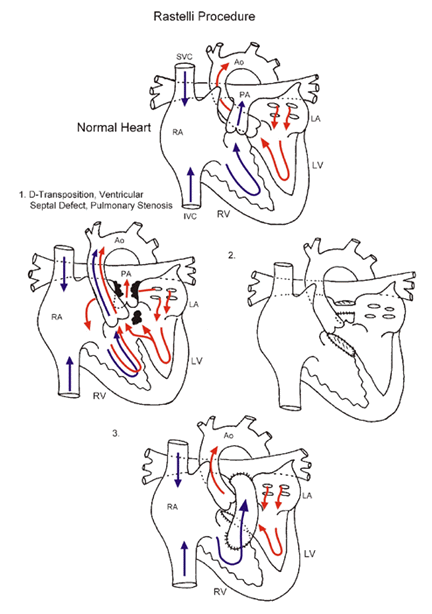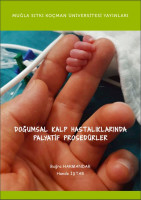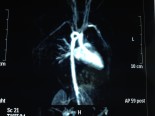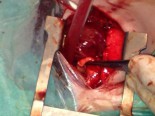Çocuk Kalp Hastalıkları ve Cerrahisi (Pediatric Heart Diseases and Cardiac Surgery)
Çocuk Kalp Cerrahisi Platformu (Platform for Pediatric Heart Surgery)
Pediatrik Kalp Hastalıkları ve Cerrahisi
Pediatric Heart Diseases and Cardiac Surgery
Rastelli operasyonu
Rastelli Procedure

Pathophysiology
The Rastelli operation was initially utilized for the repair of d-transposition of the great vessels with ventricular septal defect and pulmonary stenosis. It has subsequently been utilized for a variety of congenital heart defects characterized by two ventricles and overriding of the aorta with severe pulmonary stenosis or pulmonary atresia. Pulmonary atresia with ventricular septal defect, and double outlet right ventricle with pulmonary stenosis or atresia are anatomic subtypes also frequently submitted for the Rastelli procedure. Cyanosis is the prevailing preoperative pathophysiology.
Surgical Technique
The Rastelli repair requires cardiopulmonary bypass and aortic cross-clamping. The ventricular septal defect is visualized through a right ventriculotomy. Obstructive right ventricular muscle is excised, and a large intra-ventricular baffle is sutured into place closing the ventricular septal defect and redirecting left ventricular outflow to the more anteriorly placed aortic valve. A valved homograft conduit is utilized to achieve right ventricular to pulmonary artery continuity. Transesophageal echocardiography is utilized to help assess adequacy of repair. Cardiopulmonary bypass time and aortic cross-clamp time required to complete repair is usually moderate to long.
Postoperative Considerations
The Rastelli operation, despite its many advantages, is an extensive operation and sometimes results in early hemodynamic instability. Invasive monitors utilized following repair include arterial, central venous and left atrial catheters. An oximetric catheter is utilized for monitoring cardiac output. Vasoactive infusions required for hemodynamic management might include dopamine or dobutamine, epinephrine, nitroprusside, phenoxybenzamine, and milrinone. Satisfactory postoperative hemodynamics are dependent upon free, unobstructed egress of blood from both the left ventricle and the right ventricle. Obstruction to either outflow tract will contribute to ventricular failure. Arrhythmia is a potential postoperative complication. Temporary atrioventricular pacing capability must be readily available. Bleeding is occasionally encountered following the Rastelli procedure. Intracardiac pressures should be normal postoperatively. Arterial oxygen saturation should be normal. Uncomplicated recovery from the Rastelli operation should result in a hospital stay of one to two weeks.








